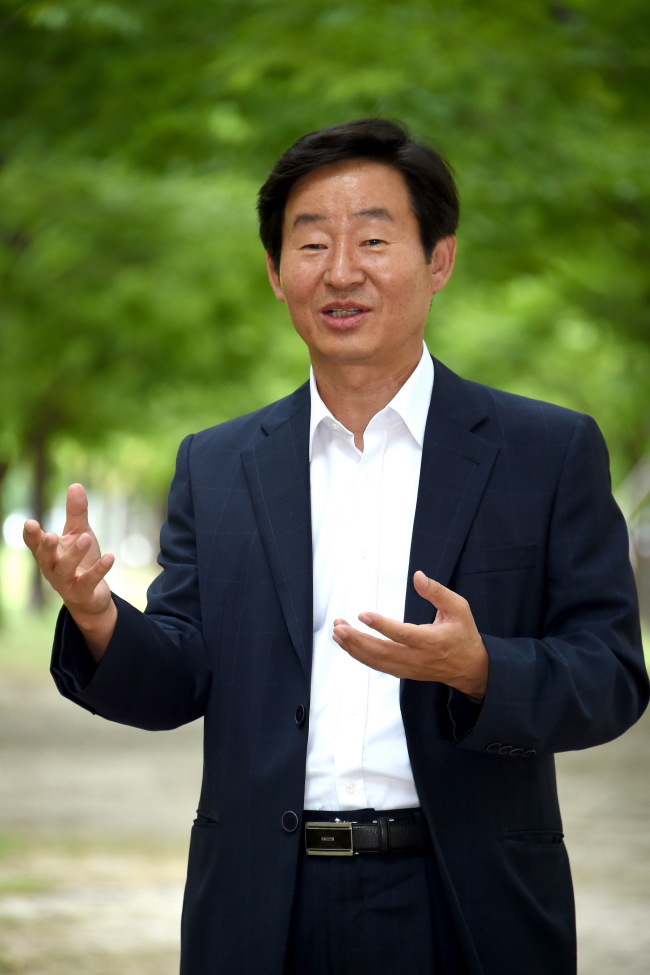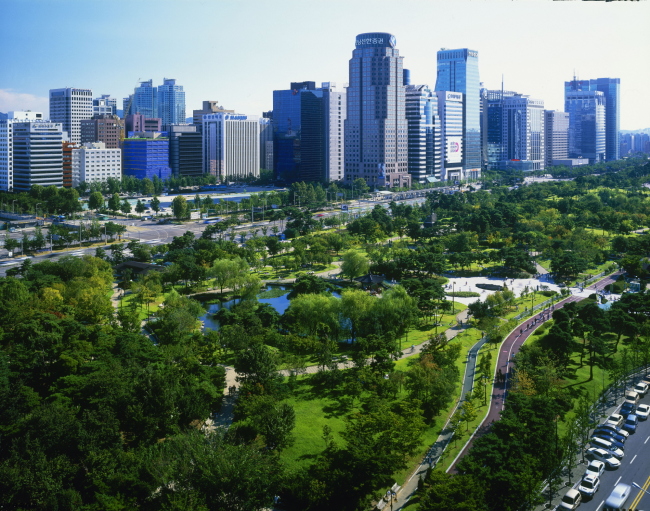The urban forest project carried out by the Korea Forest Service has sought participation from citizens and businesses to realize the plan, according to a senior government official.
According to data from the KFS, the average urban forest area per person in Korea is 8.32 square meters, which falls below the World Health Organization standards of at least 9 square meters per inhabitant.
Seoul only has 4.35 square meters of green space per person and Gyeonggi Province has 5.29 square meters per person, a far cry from cities such as Paris (13 square meters), New York (23 square meters) and London (27 square meters).

Lee Chang-jae, director general for the forest resources bureau at the Korea Forest Service
“Due to rapid industrialization in recent years, 91 percent of Korean citizens live in cities, but are lacking in green space in residential areas,” said Lee Chang-jae, director general of the Forest Resources Bureau at the KFS.
“There has been demand for wider green space among citizens as their interest began to shift towards leisure time and health, as well as the environmental well-being of their residential areas,” he said.
According to a poll from the KFS, 85.8 percent of ordinary citizens and 95.5 percent of expert groups speculated that there would be more urban forests in Korea in the future.
Despite the many demands for an urban forest, Lee said that the government budget for urban forests has been decreasing year after year.
The portion of the budget allocated to local governments for green space decreased from 80.7 billion won ($68.2 million) in 2009 to 49.8 billion won in 2013.

Per capita size in urban forest: Seoul , Paris, New York, London
The Korean government and local governments had planned their budgets in collaboration to carry out an urban forest project, but found that there were limitations in implementing a government-led forestation project.
“We needed an alternate solution,” Lee said. “The Korea Forest Service changed their approach and decided to carry out an urban forest project in which citizens and businesses contributed.”
The KFS restructured their urban forest project in 2013 so that collaboration with businesses and civic groups would be a pivotal part of the plan.
Under the new plan, the urban forest project would last from 2013 to 2017 and would carry out five major strategies and 19 promotional works, to consist of expanding green spaces in urban areas, increasing their quality and establishing a solid foundation.
Lee said that the KFS prompted businesses to participate in the project with incentives.
“We created a participation plan for businesses and provided benefits to those who participated,” he said.
According to the plan, participating businesses were to help fund the project, such as supporting the costs of development, trees and accommodations. In exchange, the KFS provided payment back in the form of tax benefits and by installing their names on commemorative markers.

Yeouido Park in central Seoul, an urban forest in Korea KFS
“By law, the central government and local government cannot directly donate funds or trees, so we created an ‘urban forest trust fund’ instead to help fund the project,” Lee said.
Lee added that there was strong communication with citizens, businesses and local governments when carrying out their project.
In November 2013, they hosted briefing sessions to businesses on social contribution, and also held multiple site discussions with local governments to receive feedback on how to best utilize an urban green space.
Lee added that the KFS also sent surveys and held online policy discussions for citizens in order to urge participation and implement their feedback.
The KFS promoted their project through multiple channels, such as television, newspapers, social media and billboards.
Lee said that the urban forest project increased the amount of green areas per inhabitant and increased quality of life for locals.
The amount of forest areas in the city increased over two years, from 36,319 hectares in 2011 to 38,513 hectares in 2013, with the amount of urban forest area per inhabitant increasing from 7.76 square meters in 2009 to 8.32 square meters in 2013.
“Additionally, with participation from citizens, businesses and local governments, the project was able to save 16.2 billion won from the national budget,” Lee said.
The KFS called the progression of the urban forest project a prime example of “Forest Administration 3.0,” described as a new paradigm in government operation where the government provides preemptive administrative services to the people based on openness, sharing, communication and cooperation.
“We would like to thank the citizens and businesses that participated in the urban forest project last year,” Lee said. “The urban forest faced many difficulties in development and management from the efforts of the government and local governments alone.”
Lee also urged for additional participation in future management. “We would like to see citizens and businesses continue to participate, such as by donating trees and follow-up management.”
By Sang Youn-joo and Lee Kwon-hyung (
sangyj@heraldcorp.com)(kwonhl@heraldcorp.com)








![[Graphic News] More Koreans say they plan long-distance trips this year](http://res.heraldm.com/phpwas/restmb_idxmake.php?idx=645&simg=/content/image/2024/04/17/20240417050828_0.gif&u=)